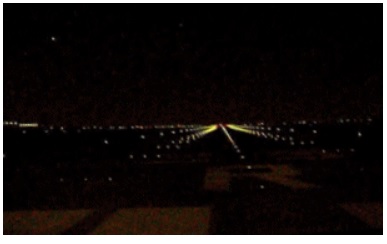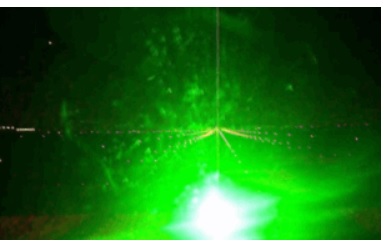#LaserWeapon
Every so often, and it seems more recently, we hear news reports about pilots being harassed, even temporarily blinded, by lasers. Now, we don’t mean a military grade weapon with an awesome payload of power. We mean the kind of laser pointer that a teacher or seminar presenter would use to highlight some text or picture being projected on a screen in an auditorium. How can, essentially, a toy be used as a weapon? This column is about that – and why it is seriously not funny. At all.
Who Rescues The Rescuers?
Recently, the USCG reported that they were responding to a plea from a frantic wife and mother of a 50-year-old husband and their three children, with whom she had lost communications with, while the husband was attempting to paddle four miles back in to shore in Florida. Their 15-foot Jon Boat with four people on board had become disabled and night was drawing in.
The USG launched a 45-ft Response boat to effect the rescue. Upon arrival, the USCG crew launched two illumination flares and conducted a search with no results. While conducting the search, the response crew reported multiple laser strikes in the vicinity of the search area, all originating from shore, from at least two different sources. Two members of the USCG crew were struck directly in the eyes from the lasers and had to seek medical attention following the incident.
What Happened To The Eyes?
There are three primary areas of concern. They are "visual effects" that temporarily distract or block a pilot’s or boat crewman’s vision.
- Distraction and startle. An unexpected laser or bright light could distract the pilot during a nighttime landing or takeoff. A pilot might not know what was happening at first. They may be worried that a brighter light or other threat would be coming. It is important that pilots be trained not to over react but also to deal with the matter with the utmost safety in mind.
- Glare and disruption. As the light brightness increases, it starts to interfere with vision. “Veiling glare” (see pictures “before” and “after”) would make it difficult to see out the windscreen. Night vision starts to deteriorate. Laser light is highly directional so that pilots may act to exclude the source from their direct field of vision if properly trained.
- Temporary flash blindness. This works exactly like a bright camera flash: there is no injury, but night vision is temporarily knocked out. There may be afterimages—again, exactly like a bright camera flash leaving temporary spots.
The three visual effects above are the primary concern for aviation experts. This is because they could happen with lower-powered lasers that are commonly available.


After– courtesy of the USCG
Before – courtesy of the USCG
Remember also that pointer lasers have an illuminance of about 1 lumen/m2 whereas during the day the pilots have to deal with sunlight which is one hundred thousand times stronger. But it is the circumstances of when it is happening – at night when the eyes are highly dilated to catch as much light as possible – which amplifies the effect!
Laser pointers are inexpensive to obtain and can extend over two miles in range. Pilots affected by laser strikes regularly report temporary effects in vision, including: afterimage, flash blindness and temporary loss of night vision. In some cases, a laser strike can result in permanent damage to a person’s eye sight. If a crewmember is lased it severely compromises his ability to effectively respond and safely operate the aircraft or vessel, ultimately endangering the safety and lives of crewmembers aboard and the general public.
Pointing a laser at an aircraft is a federal crime and a felony offense under Title 18, United States Code, Section 39A. If found guilty, offenders could be fined up to $250,000 and sentenced to five years in prison. Pointing a laser at a vessel is also a federal crime under Title 18, United States Code, Section 2291. If found guilty, offenders could be fined and/or imprisoned for up to 20 years, with a potential for higher confinement time based upon the cargo onboard the vessel and/or whether a death results from the act. Additionally, a person who interferes with the safe operation of a vessel so as to endanger the life, limb, or property of a person, in violation of 46 U.S.C. §2302, is liable to the U.S. Government for a civil penalty of not more than $5,000 in the case of a recreational vessel, or $25,000 in the case of any other vessel.
Oh, what happened to that 50-year old husband and father with his 3 children..? Eventually, he rowed the entire 4 miles back to shore… adding further to the human drama of USCG rescuers being lased and requiring medical treatment…
